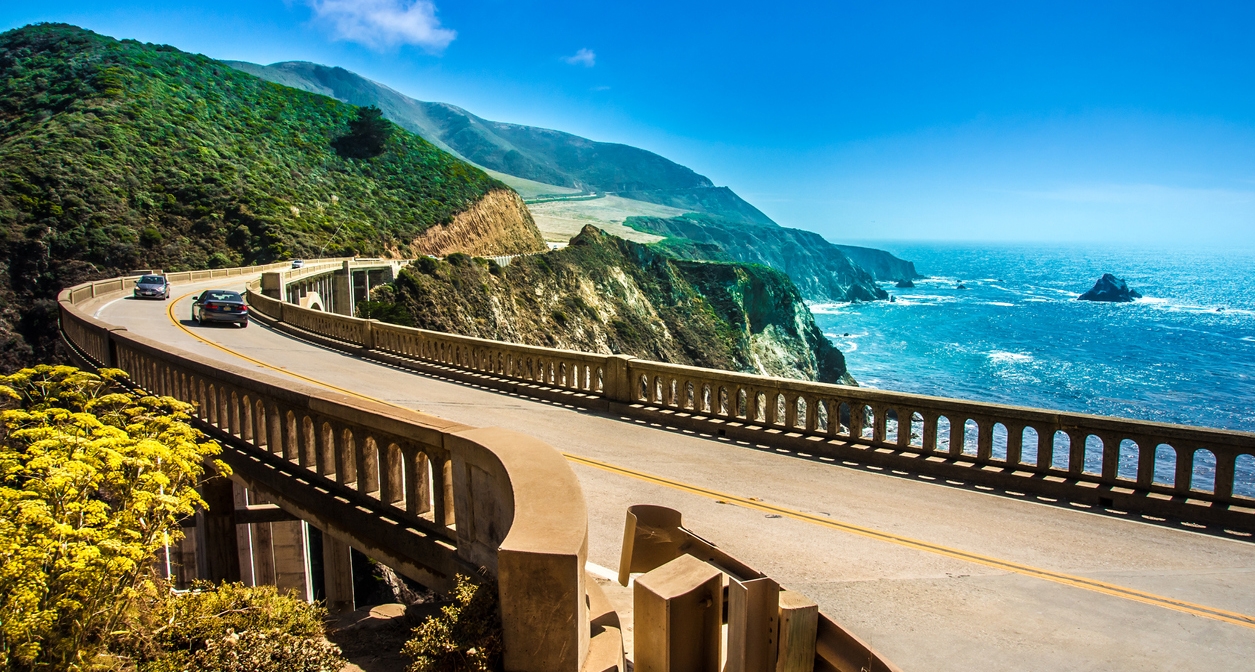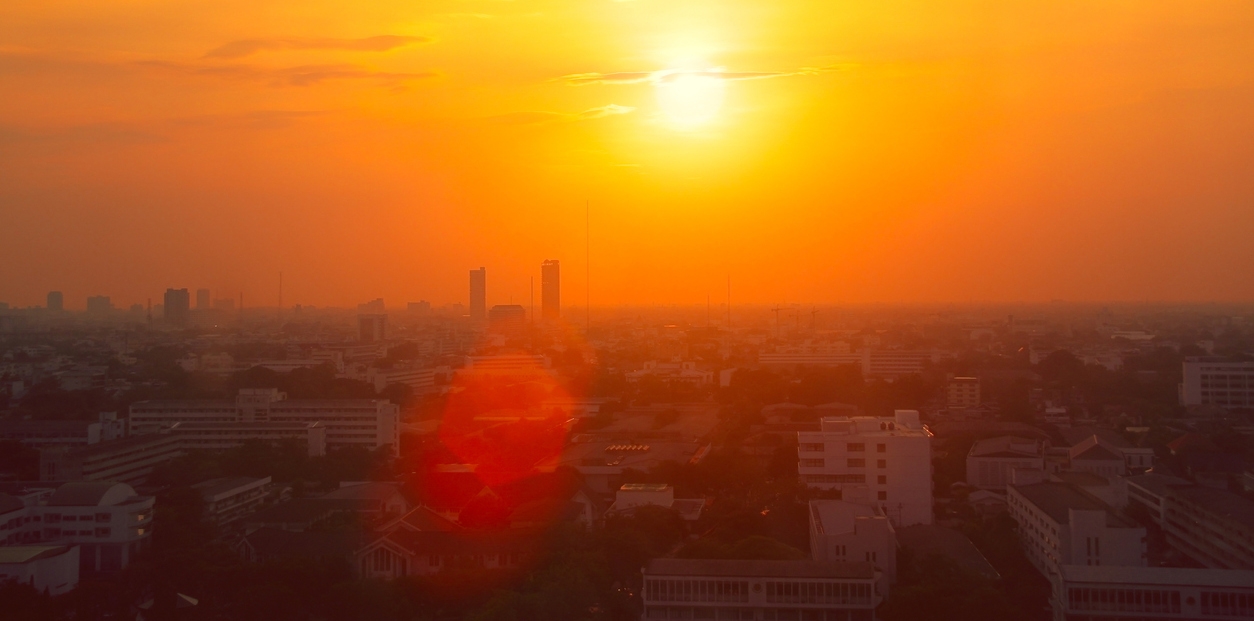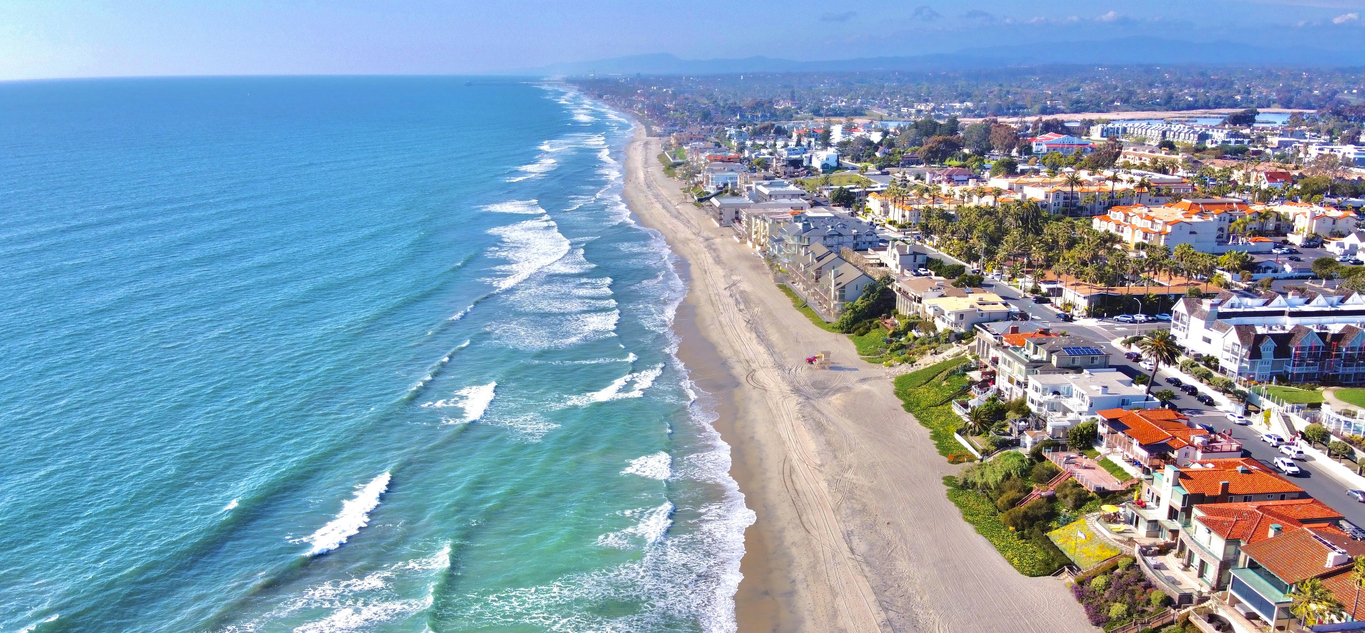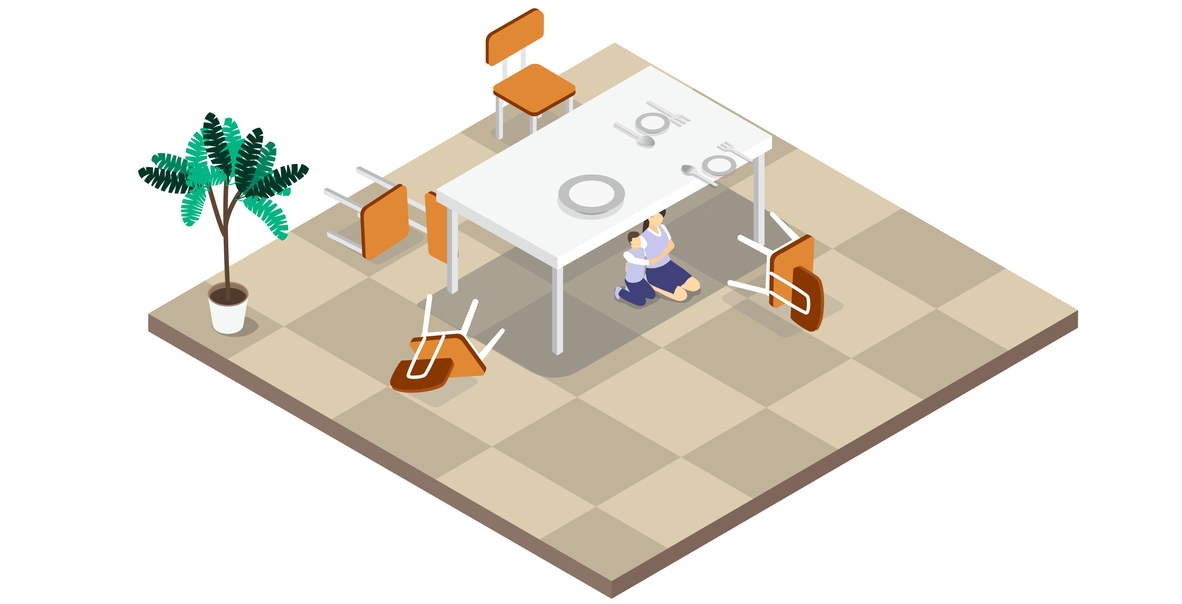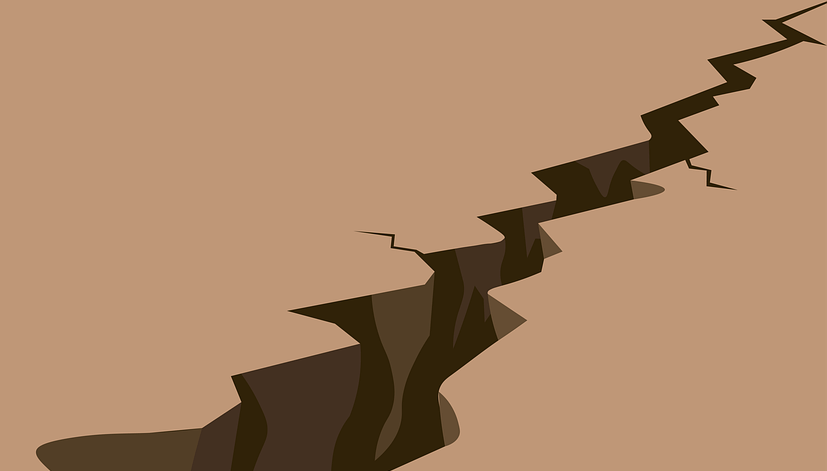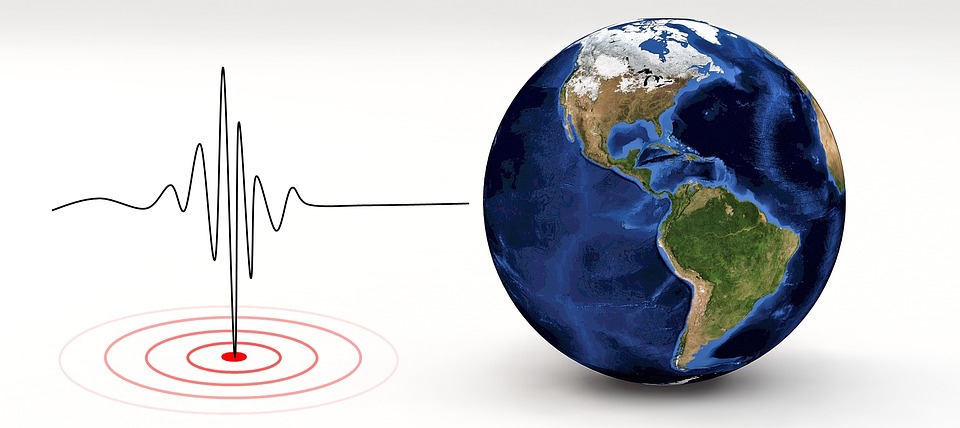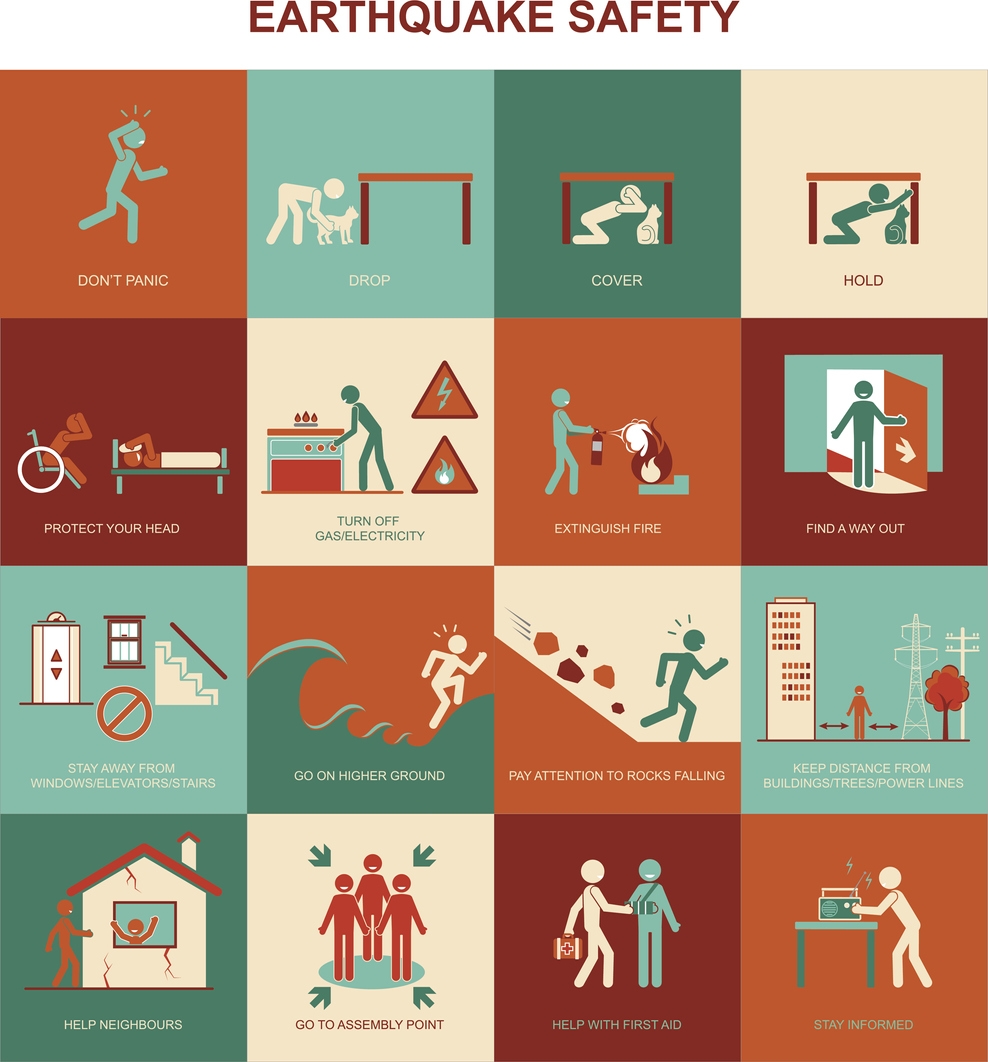Background
An earthquake is among the natural disasters that can occur on our planet. It pertains to any sudden shaking of the ground caused by the passage of seismic waves through the rocks of the Earth. These waves are produced when some form of energy stored in the crust of the Earth is suddenly released. Most of the time, it happens when masses of rock straining against one another suddenly fracture and slip. For many years, earthquakes have been the cause of millions of fatalities and untold amounts of property damage.
While earthquakes can happen anywhere and at any time, they often happen along fault lines where compressional or tensional forces cause rocks on opposing sides of a fracture to move in the same direction. The world’s largest fault lines are located near the edges of the enormous tectonic plates that make up the crust of the Earth. [1] An earthquake is a natural disaster, and there is nothing that humans can do to prevent it from happening. Fortunately, there are plenty of safety measures that we can follow to stay safe during an earthquake.

home damaged by an earthquake

illustration of an earthquake occurring
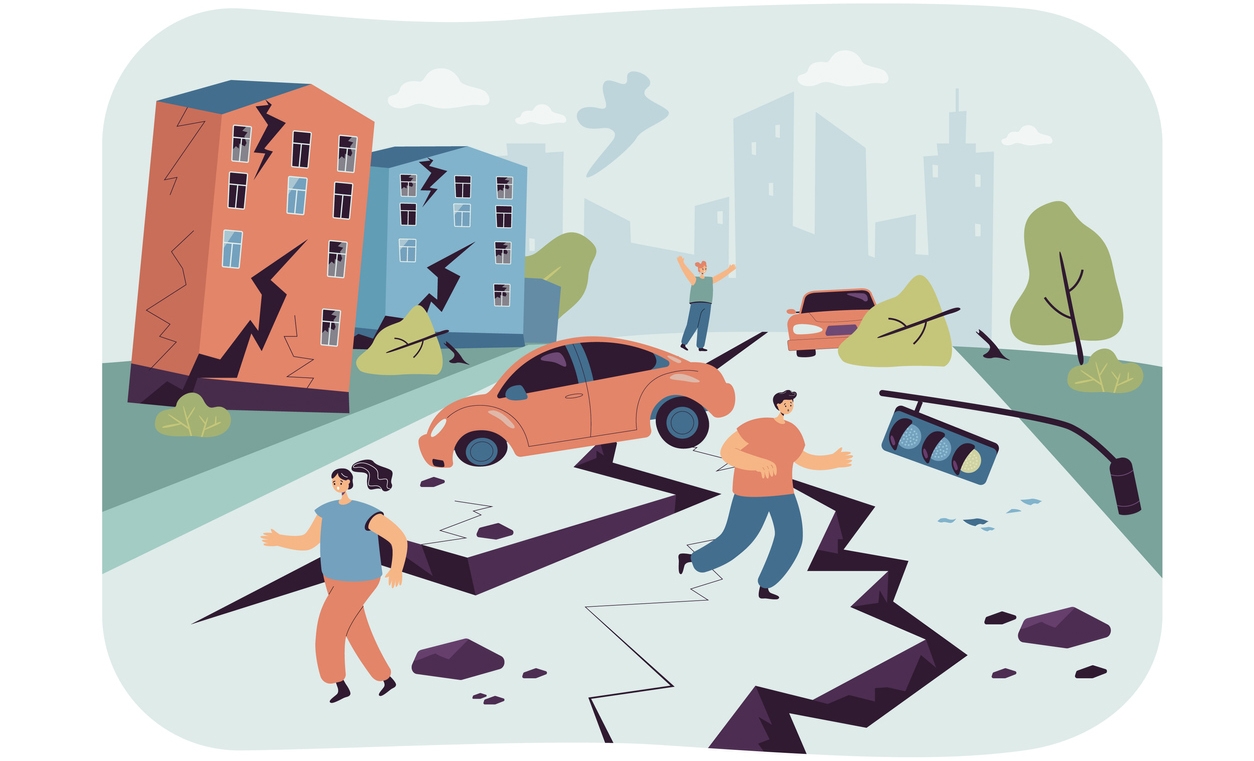
illustration of people escaping during an earthquake
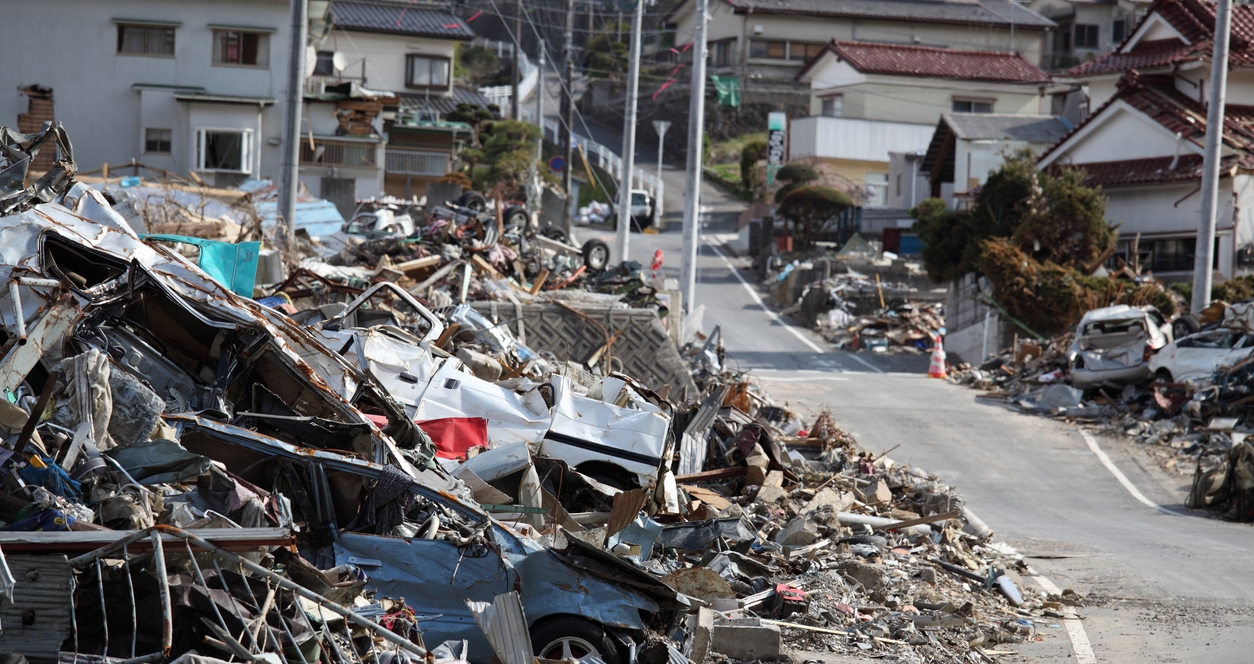
damage left by an earthquake
However, there are also popular myths about earthquakes that are more than misleading, as they can put people at risk during an emergency. Therefore, it is important to put an end to these myths and provide more factual information about earthquakes. To help with that goal, we have gathered in this post some of the most popular earthquake myths that many people think are true, along with the truths behind them.
Myth #1: Earthquakes only happen on the West Coast of the United States.
This is not true because earthquakes can strike anywhere. In fact, all of the states and five U.S. territories are at some risk for earthquakes. Among them, 45 are at moderate to very high risk. One proof of this is the 2011 earthquake that occurred in Virginia. [2]
Earthquakes just happen more often along the West Coast of the United States due to its location on the edge of several large tectonic plates. The enormous moving rock masses known as tectonic plates are what make up the Earth’s crust. These plates sliding and grinding against each other is what causes earthquakes. Because these plates’ intersection is farther from the East Coast of the United States, there are fewer earthquakes there. [3]
Myth #2: Run outdoors if you are indoors during an earthquake.
Many people believe that when an earthquake occurs, it is better to move and go outside as it is safer. However, this belief is wrong. The right thing to do is to stay inside if you are inside and outside if you are outside. When you are indoors, find sturdy furniture, such as a table, where you can duck, cover, and hold until the shaking stops. [4]
If you are outdoors, make sure that you are away from buildings, utility wires, sinkholes, and fuel and gas lines. Try to go to an open area that is far from trees and telephone poles. Get low once you’re outside and remain there until the earthquake stops.
In the event of an earthquake while you are driving, stop as soon and safely as you can. Get your automobile off the road and onto the shoulder or curb, far from any poles, wires, or overpasses. Stay inside the car and set the parking brake. Listen to the news on the radio for emergency broadcast information. When it is safe to drive again, look out for hazards caused by the earthquake, like breaks in the pavement, downed poles and wires, rising water levels, and collapsed bridges. [4]
Myth #3: Get in a doorway when an earthquake occurs.
The door frame is the only remaining portion of an adobe home that collapsed in California during an earthquake. The idea that doorways are the safest places to be during earthquakes was inspired by the photograph of that event. Therefore, this myth can only be true if you live in an unreinforced adobe home.
In a modern home or structure, the doorway is not stronger than the rest of the building. In fact, when you stand in a doorway during an earthquake, you are more likely to be hurt as it will be swinging wildly. And if you live in a building, standing in a doorway during an earthquake is dangerous as there will be lots of people trying to hurry outside. It is still safer to get under a table or desk and hang on to it if you are indoors. [5]
Myth #4: Dogs and other animals can sense when an earthquake is going to strike.
A few days before an earthquake decimated the Greek city of Helike in 373 B.C., historians noted that a large number of animals, including rats, snakes, and weasels, had left the area. Since then, accounts of comparable animal earthquake anticipation have come to light. There have been reports of bees fleeing their colony in terror, hens that stop laying eggs, and catfish writhing aggressively. Numerous pet owners reported seeing their animals acting abnormally just before the ground began to shake—barking or whimpering for no apparent reason or displaying indications of agitation and uneasiness. [6]
However, precisely what animals sense is a mystery. It is impossible to know whether a dog is behaving in an unusual manner because it smells an earthquake coming or just saw a cat across the street. Even though changes in animal behavior sometimes have been observed before earthquakes. But they were not consistent, and more often, there is no perceptible behavior change before an earthquake. [5]
Myth #5: Earthquakes occur during “earthquake weather” or hot and dry weather.
Aristotle believed that earthquakes were generated by trapped winds in underground caves in the fourth century B.C. It was believed that little tremors were brought on by air pressing on cavern roofs, and larger ones were brought on by air breaking the surface. This theory gave rise to the notion that there would be hot, calm weather prior to an earthquake because there would be a lot of air trapped underneath. In a later idea, earthquakes were thought to happen in calm, cloudy weather and were typically accompanied by powerful winds, fireballs, and meteors.
The phrase “earthquake weather” does not exist. According to statistics, the frequency of earthquakes is roughly equal in all meteorological conditions—cold, hot, rainy, etc. Typhoons, hurricanes, and other powerful storm systems are known to cause extremely massive low-pressure shifts that can lead to episodes of fault slide (slow earthquakes) in the Earth’s crust and even some destructive earthquakes. The figures, however, are negligible and lack statistical significance. [7]
Myth #6: Big earthquakes always occur early in the morning.
People have a tendency to think that all large earthquakes occur in the morning because a number of recent destructive earthquakes occurred in the early hours. [8] The weather is unimportant to earthquakes, and they are also unable to tell time. The Imperial Valley earthquake in 1940 struck at 9:36 p.m., and the Loma Prieta earthquake in 1989 struck at 5:02 p.m. People who believe in the time and weather myths prefer to recall the earthquakes that fit the pattern and ignore the ones that don’t. [5]
Myth #7: California could fall into the sea due to an earthquake.
No, California won’t plunge into the sea. California is securely rooted between two tectonic plates at the top of the earth’s crust. The boundary between the Pacific Plate (which includes the Pacific Ocean) and the North American Plate is the San Andreas Fault System, which runs through California from the Salton Sea in the south to Cape Mendocino in the north (that includes North America).
Horizontally sliding past one another, these two plates are in motion. Approximately 46 millimeters per year are being moved northwest by the Pacific Plate in relation to the North American Plate (the rate your fingernails grow). This plate motion causes the San Andreas Fault’s strike-slip earthquakes. There is no place for California to fall, but one day Los Angeles and San Francisco will be close by. [9]
Myth #8: Small earthquakes keep big ones from occurring.
About 30 times more energy is released with each magnitude level. It takes 30 magnitude 3s to match the energy produced in a magnitude 4 and 900 magnitude 3s to match a magnitude 5. And 729 billion magnitude 3s to make up one magnitude 9. Therefore, while a small earthquake may momentarily reduce tension on a fault line, it does not stop a huge earthquake from occurring. [5]
Myth #9: The magnitude of an earthquake determines whether disaster assistance is forthcoming.
The magnitude of the earthquake does not determine the level of response. What determines the level of response after an earthquake is the magnitude of damage. For instance, when a magnitude 7 earthquake occurs in the middle of a desert, there is likely less damage compared to when a magnitude 6 earthquake occurs in downtown Los Angeles. [5]
Myth #10: Earthquakes are becoming more frequent.
According to research, earthquakes with a magnitude of at least 7.0 have been relatively steady over the past century and have even declined recently. However, it can appear that there are more due to the increased availability of seismological facilities and tools that can detect numerous tiny earthquakes that went unnoticed in previous decades. [5]
Myth #11: Earthquake faults can open wide enough to swallow buildings and people.
A fault that becomes active during an earthquake and engulfs an unfavorable character is a common literary technique. However, gaping faults are a fiction-only phenomenon. The ground moves across a fault during an earthquake, not away from it. There would be no friction if the fault could open, and earthquakes wouldn’t occur if there were no friction. [8]
Myth #12: Everyone will panic during the big one.
It’s a frequent misconception that during and after earthquakes, people always panic and rush around hysterically, increasing the risk to themselves and others. However, based on research, most people usually take protective actions and try to help others both during and after the earthquake. This means that most people are not too shaken up when there is an earthquake. [10]
Myth #13: We can predict earthquakes.
Currently, it is impossible to accurately anticipate the timing, intensity, or duration of an earthquake. The size of the earthquake at its source, as well as the length—which can range from a few seconds to several minutes—of an earthquake, can all vary. [11]
Where large earthquakes are expected to occur can be predicted by scientists, and they can also make broad projections of the likelihood that a location will experience earthquakes. However, these predictions may not turn out to be reliable because strain might grow when it is discharged along one component of a fault system. Therefore, most earthquake predictions out there are vague at best. In fact, scientists have had more success in predicting aftershocks following an initial earthquake. [12]
Myth #14: The 1906 San Francisco earthquake was the deadliest ever.
Although well-known, the magnitude 7.8 San Francisco earthquake and subsequent fire claimed 700–800 lives and completely destroyed huge portions of the city. Although it was the worst in American history, it wasn’t by far the worst disaster to ever occur. In 1556, the Shensi region of China saw the greatest earthquake in recorded history, which left over 830,000 people dead. [10]
In another event, between 250,000 and 800,000 people died. It was in the 1976 Tangshan, China, magnitude 7.8 earthquake. More than 40,000 people were killed by the magnitude 6.5 earthquake near Bam, Iran, in 2003. With a magnitude of 9.5, the earthquake that struck Chile on May 22, 1960, was the world’s biggest ever recorded. It claimed more than 4,000 lives. For the record, Alaska had the nation’s biggest earthquake on March 28, 1964. There were 131 fatalities from the magnitude 9.2 earthquake. [10]
Myth #15: People can stop earthquakes.
There are numerous places in the United States and many other nations across the world where earthquakes caused by human activity have been reported. A variety of factors, such as the filling of reservoirs, surface and underground mining, the removal of waters and gas from the subsurface, and the injection of fluids into underground formations, can trigger earthquakes. Larger, possibly dangerous man-made earthquakes have happened in the past, despite the fact that the majority of induced earthquakes are tiny and pose minimal risk. Therefore, if we can cause an earthquake, can we also stop it?
The answer is no. There is no way for us humans to stop an earthquake when it occurs or to prevent one from occurring. While natural earthquakes cannot be entirely avoided, their impacts can be greatly reduced by recognizing risks, erecting better structures, and disseminating information on earthquake safety. We can lessen the risk of man-made earthquakes by being prepared for natural earthquakes. [13]
Conclusion
These are some of the earthquake myths that many people think are true. Some of these myths are really dangerous when followed. By knowing the truth behind these myths, we can help other people stay safe in case an earthquake occurs. Also, even if it is true that we can’t stop earthquakes, one important thing that we can do is to be prepared. It would be great if you could have an earthquake kit that contains food, water, a flashlight, and other essential items.
It is also important to practice “duck, cover, and hold” drills at home or at work. Developing an earthquake plan is also essential, which includes where you would meet your family members if you were not together when an earthquake occurred. We hope this post helped you learn more about the earthquake myths that you should stop believing.
References
[1] Bolt, B. A. (2022, July 27). Earthquake. Encyclopædia Britannica. Retrieved August 15, 2022, from https://www.britannica.com/science/earthquake-geology
[2] Travelers Risk Control, E. (2022). Earthquake facts and myths. Travelers Insurance. Retrieved August 15, 2022, from https://www.travelers.com/resources/weather/earthquakes/earthquake-facts-and-myths
[3] UCSB ScienceLine, E. (2020, August 14). Where are earthquakes more common, in the East or the West coast of the United States? Why? UCSB Science Line. Retrieved August 15, 2022, from http://scienceline.ucsb.edu/getkey.php?key=7029
[4] CDC, E. (2020, September 24). Stay safe during an earthquake. Centers for Disease Control and Prevention. Retrieved August 15, 2022, from https://www.cdc.gov/disasters/earthquakes/during.html\
[5] CSUSM, E. (2022). Earthquake myths and facts. CSUSM. Retrieved August 15, 2022, from https://www.csusm.edu/em/procedures/earthquake_myths.html
[6] Mott, M. (2021, May 3). Can animals sense earthquakes? Animals. Retrieved August 15, 2022, from https://www.nationalgeographic.com/animals/article/animals-sense-earthquakes
[7] USGS, E. (2022). Is there earthquake weather? Is there earthquake weather? | U.S. Geological Survey. Retrieved August 15, 2022, from https://www.usgs.gov/faqs/there-earthquake-weather
[8] NBC, E. (2021, April 19). 10 common earthquake myths debunked. NBC Los Angeles. Retrieved August 15, 2022, from https://www.nbclosangeles.com/news/california-news/earthquake-myths/1937883/
[9] USGS, E. (2022). Will California eventually fall into the ocean? | U.S. Geological Survey. Retrieved August 15, 2022, from https://www.usgs.gov/faqs/will-california-eventually-fall-ocean
[10] CPP, E. (2020). Earthquake myths and facts. Myths and Facts. Retrieved August 15, 2022, from https://www.cpp.edu/em/great-shake-out/myths.shtml
[11] Bressan, D. (2017, November 24). Why can’t we predict earthquakes? Forbes. Retrieved August 15, 2022, from https://www.forbes.com/sites/davidbressan/2017/11/24/why-cant-we-predict-earthquakes/?sh=4a848e1c6332
[12] Harris, T., & Kiger, P. J. (2021, June 12). How earthquakes work. HowStuffWorks Science. Retrieved August 15, 2022, from https://science.howstuffworks.com/nature/natural-disasters/earthquake7.htm
[13] USGS, E. (2022). Can we cause earthquakes? Is there any way to prevent earthquakes? | U.S. Geological Survey. Retrieved August 15, 2022, from https://www.usgs.gov/faqs/can-we-cause-earthquakes-there-any-way-prevent-earthquakesd


